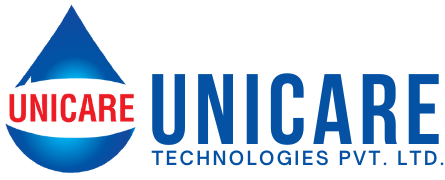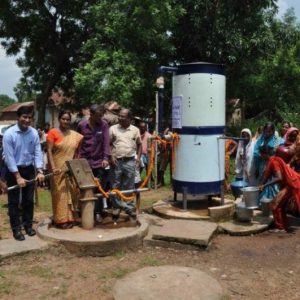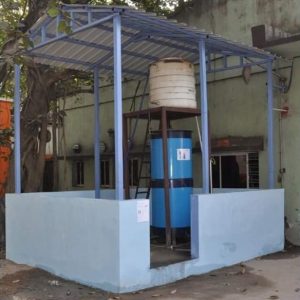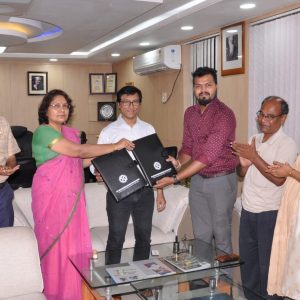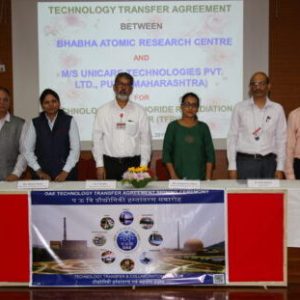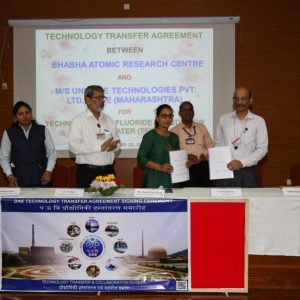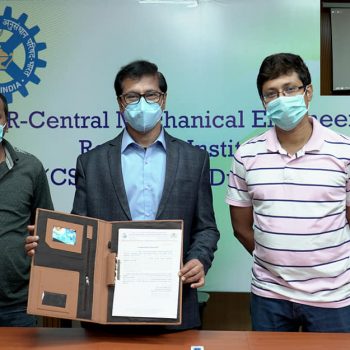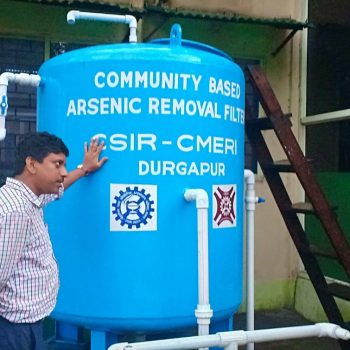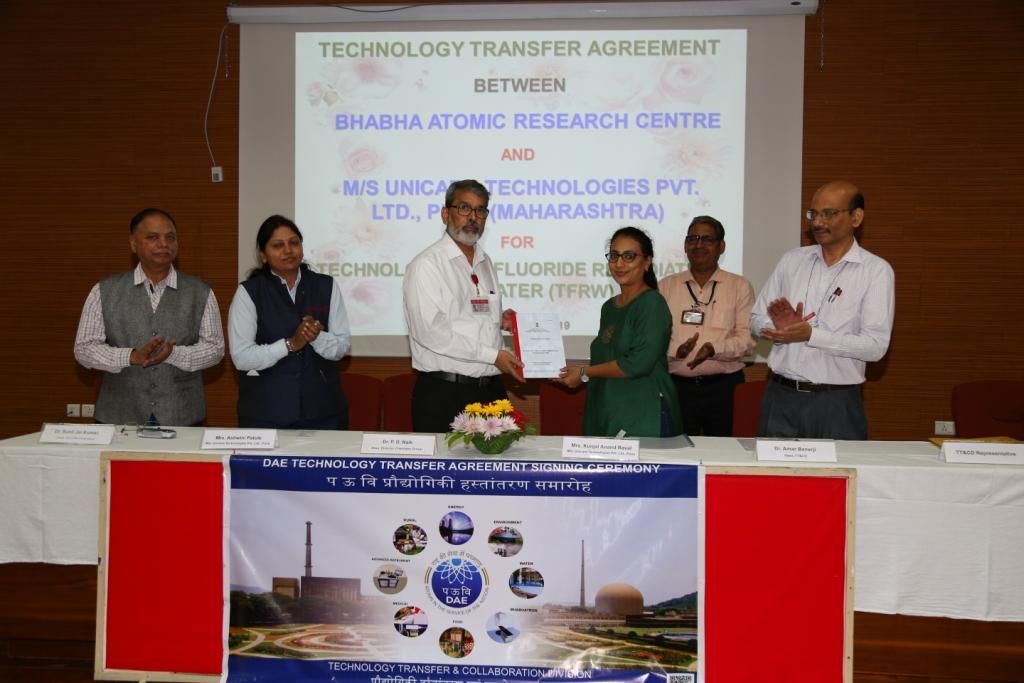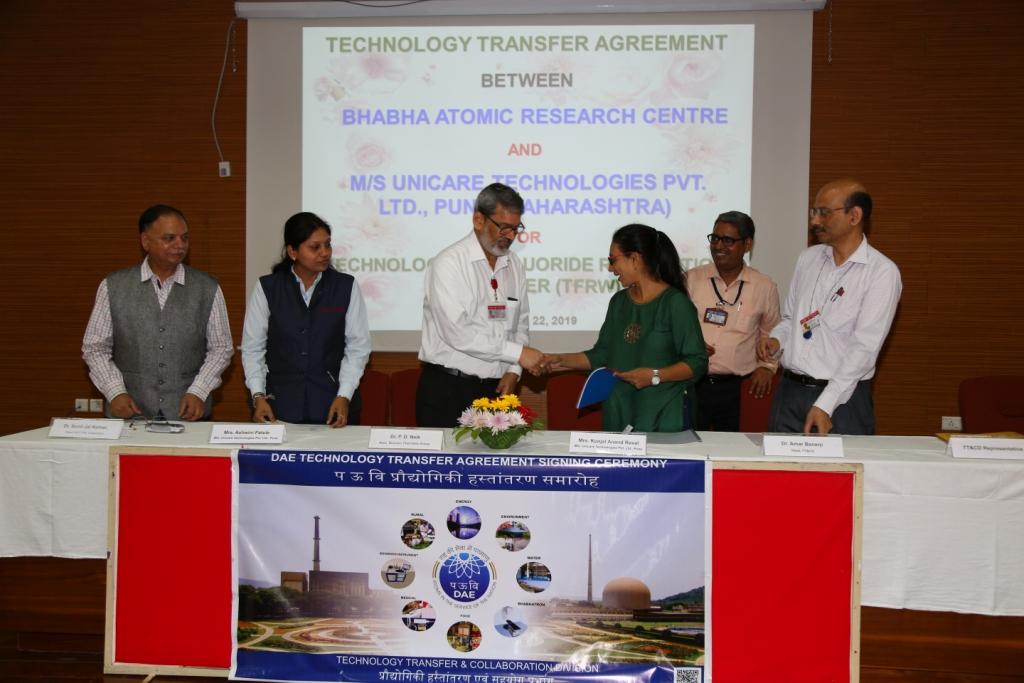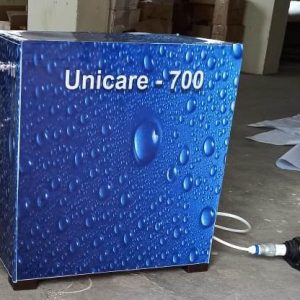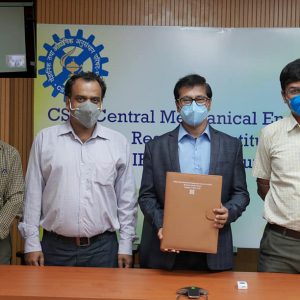
Technologies
Iron Removal Plant – Central Mechanical Engineering Research Institute With collaboration between CMERI and Unicare Technologies Pvt Ltd, we have taken the technology license for a High flow rate Iron removal filter.
Application/uses:
Efficient removal of iron contamination, Fe(II) and Fe(III) for producing iron-free clean water.
Salient Technical Competing Features:
⦁ Affordable, high-flow rate water filter
⦁ Filterable water with maximum iron concentration ~ 12 ppm
⦁ Long-lasting media
⦁ Purification: 3-stage
⦁ Flow rate: 3000-3500 L/Hour
⦁ Regeneration of the media by the back-wash facility
Fluoride Removal Plant – Central Mechanical Engineering Research Institute With collaboration between CMERI and Unicare Technologies Pvt Ltd, we have taken the technology license for High flow rate Fluoride and Iron removal filter.
Application/uses:
- Can be deployed in fluoride and iron-affected regions of India like UP, Bihar, Assam, and Jharkhand.
Salient Technical Competing Features:
- An initiative towards solving the dual contaminants problem in groundwater (F- as well as Fe3+)
- An integrated adsorbent-based water purification system for effective removal of fluoride as well as iron in an efficient manner from contaminated water bodies.
- Three-stage purification process to purify water as per WHO limit (1.5 ppm for fluoride and 0.3 ppm for iron)
- High flow rate integrated purification system.
- Sustainability towards healthy livelihood generation.
- Selective backwash without dismantling any part of the plant.
- Technology is a major thrust toward Atma Nirbhar Bharat Abhiyan. The technology will help in catalyzing employment generation opportunities for the youth.
With collaboration between BARC and Unicare, we have taken the technology transfer for Fluoride Remediation from Water.
Fluoride is known to occur at elevated concentrations in a number of parts of the world and in such circumstances can have, and often has a significant adverse impact on public health and well-being. India is one of the worst fluorosis-affected countries, with a large number of people suffering. This is because a large number of Indians rely on groundwater for drinking purposes and water in many places is rich in fluoride. In India, 62 million people including 6 million children are estimated to have serious health problems (dental and skeletal fluorosis) due to consumption of fluoride contaminated water. As per Indian standard IS10500 for drinking water, the maximum permissible concentration of fluoride in drinking water is 1 mg/L.
A fluoride remediation technology is needed which should satisfy the main following criteria:
⦁ Low cost.
⦁ No use of electricity.
⦁ Adsorbent used for remediation should be reusable.
⦁ No waste generation.
The main objective of this work is to develop a fluoride remediation technology that satisfies the above-mentioned parameters.
This fluoride remediation technology for groundwater is low cost, simple regeneration (adjusting pH of adsorbent), the adsorbent can be regenerated any number of times, no loss of water in the remediation process, and regenerate solution can be reused any number of times and its volume (initially 5 % of the volume of remediated water) decreases with increasing the cycle of regeneration (after 10 cycles ~ 2%), adsorbent’s capacity factor (~15 mg/g of adsorbent) remains same even at very high TDS (>1000) of water and with any number of regeneration, no significant change in pH (± 0.3) and TDS (± 40) of raw and treated water, no residual adsorbent(<10 ppb) in the treated water, no consumption of electricity and no waste generated.
Arsenic Removal Plant – Central Mechanical Engineering Research Institute with collaboration between CMERI and Unicare Technologies Pvt Ltd, we have taken the technology license for High flow rate Arsenic removal filter.
Application/uses:
- Efficient removal of arsenic contamination, As(III) and As(V) for producing arsenic-free water.
Salient Technical Competing Features:
- Affordable, high-flow rate water filter.
- Filterable water with a maximum arsenic concentration of ~300 ppb.
- Long-lasting media.
- Adsorbents are non-toxic, low cost, and easily accessible in large quantities.
- Regeneration of the media by the back-wash facility
With collaboration between BARC and Unicare, we have taken the technology transfer for Arsenic Removal from Drinking Water by the physicochemical process.
Arsenic (As) is known to be a very toxic element and a carcinogen to humans. Even a trace amount of arsenic can be harmful to human health. The World Health Organizations’ (WHOs) current provisional guideline for arsenic in drinking water is 10 ppb. In India, states like Uttar Pradesh, Bihar, Jharkhand, West Bengal, Assam, and Manipur, mainly in the Ganga-Meghna-Brahmaputra (GMB) plan covering an area of about 569749 sq km with a population of over 500 million have reported serious illnesses due to presence of arsenic.
The arsenic removal from drinking water by physicochemical process provides a process for decontamination of water with respect to arsenic. BARC developed know-how of ultrafiltration (UF) based membrane technology for water decontamination with respect to microbiological contamination at both domestic and community scales is available for transfer separately. The present technology is a novel Ultrafiltration (UF) membrane-assisted physicochemical process for the removal of arsenic from ground/surface water to make the water safe for drinking.
APPLICATIONS
- Removal of arsenic from ground/surface water to provide safe drinking water free from primary contaminants like arsenic as well as
secondary contaminants like iron and microorganisms. - Technology can be adopted at both the domestic and community levels
SALIENT FEATURES
- Simple and rapid
- Adoptable at both domestic and community level
- The capability of high decontamination – Product water is not only free from arsenic but also free from secondary contaminants like iron,
manganese and microorganisms. - Can operate without electricity
- No specific requirement for waste disposal
- Cost-effective
Unicare 700 is our own invented product which is tested by CSIR-CMERI (Central Mechanical Engineering Research Institute). This product is most useful in a disaster situation. When the flood comes main we need clean and safe water for drinking. The main purpose of our product is to give clean and drinkable water by using flood water.
This product is successfully used in one flood situation and this is too much useful for people. One more benefit is no need for electricity.
